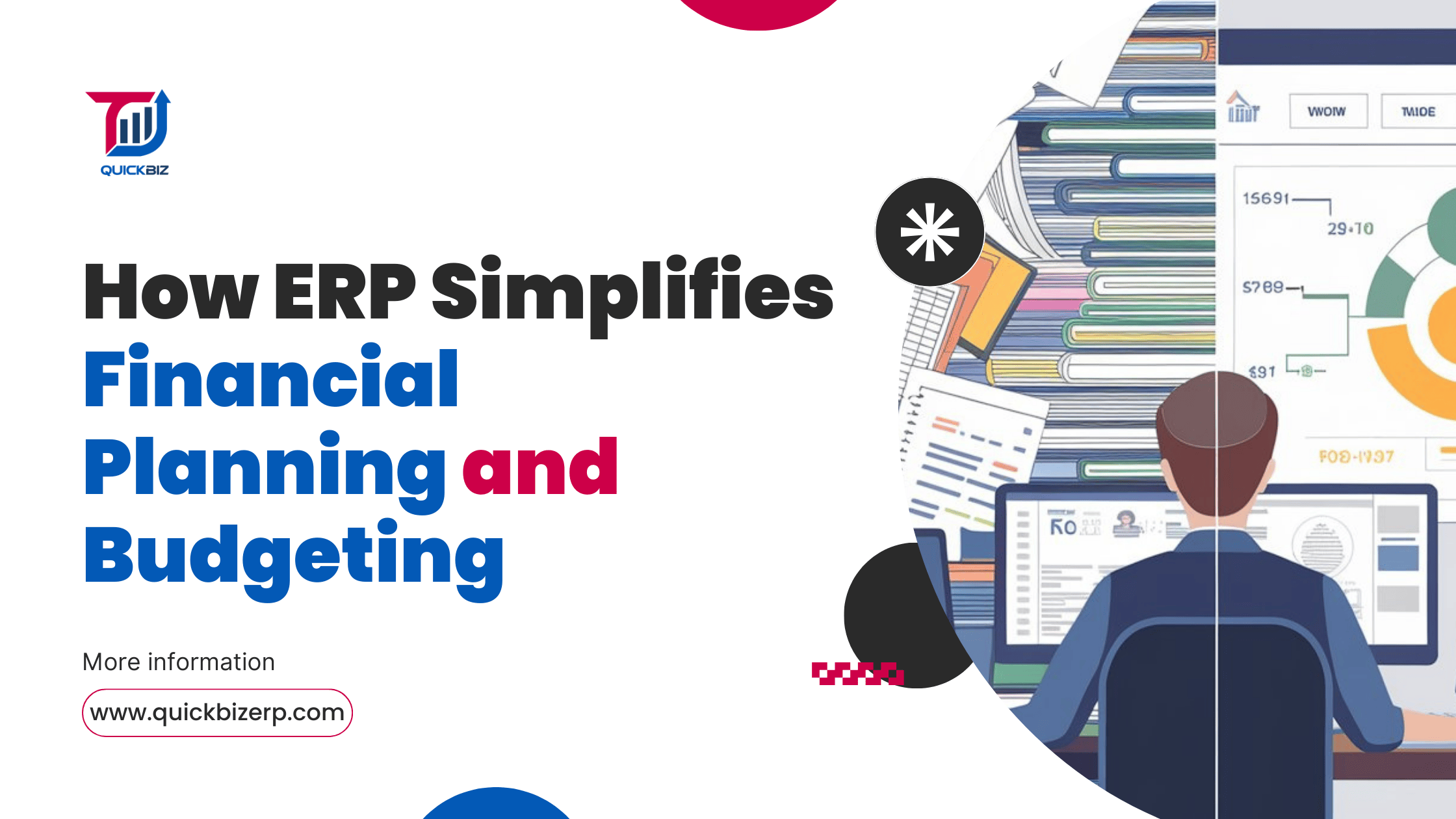How ERP Simplifies Financial Planning and Budgeting

Introduction
For small and medium-sized enterprises (SMEs), financial planning is crucial to ensuring long-term growth and stability. However, traditional financial management methods—relying on spreadsheets, disconnected accounting software, and manual processes—often lead to inefficiencies, errors, and poor decision-making.
Without accurate financial data and streamlined workflows, businesses face challenges in budgeting, forecasting, and ensuring regulatory compliance. Enterprise Resource Planning (ERP) systems address these issues by automating financial workflows, enhancing accuracy, and providing real-time visibility into financial data. In this blog, we explore the common challenges in financial planning and how ERP solutions simplify and improve the process.
Challenges in Traditional Financial Planning
Many businesses struggle with financial planning due to outdated methods and fragmented systems. Below are some of the key challenges:
1. Manual Errors and Inefficiencies
Traditional financial planning often involves manual data entry, reconciliations, and reporting, increasing the risk of human errors. Mistakes in financial statements or budgeting can lead to miscalculations, misallocated funds, and inaccurate financial forecasting.
2. Lack of Real-Time Data Insights
Financial planning requires up-to-date information to track cash flow, revenue, and expenses effectively. However, businesses relying on spreadsheets or disconnected accounting tools often experience delays in accessing accurate financial data, leading to poor decision-making. Discover how ERP analytics can drive business growth.
3. Difficulties in Forecasting and Budgeting
Without accurate historical data and real-time insights, predicting future financial trends becomes a challenge. Manual budgeting lacks the predictive analytics and automation needed to assess risks and allocate resources efficiently. Check out these simple steps to master budgeting.
4. Compliance and Regulatory Issues
Financial reporting and tax compliance are critical for any business. However,managing different tax structures, multi-currency transactions, and financial regulations manually increases the risk of non-compliance, leading to penalties and audits.
How ERP Transforms Financial Planning & Budgeting
Implementing an ERP system helps businesses overcome these challenges by automating financial management processes and centralizing financial data. Below are some of the ways ERP transforms financial planning and budgeting:
1. Automated Financial Workflows
ERP eliminates the need for manual data entry and repetitive financial tasks by automating invoicing, payroll, expense approvals, and financial reporting. This reduces errors and improves efficiency, allowing finance teams to focus on strategic planning.
2. Real-Time Data & Reporting
ERP provides real-time visibility into financial performance, cash flow, and expenses, enabling business leaders to make informed decisions. Automated dashboards and reports help track financial KPIs without manual updates.
3. Integrated Accounting & Budgeting
With ERP, all financial data is centralized in one system, ensuring a single source of truth for accounting, budgeting, and reporting. This eliminates data silos and improves accuracy in financial planning. Check out the key differences between ERP and accounting software.
4. Cash Flow Management & Forecasting
ERP systems use AI-driven financial forecasting and predictive analytics to help businesses anticipate revenue trends, manage working capital, and optimize cash flow for long-term stability.
5. Regulatory Compliance & Audit Readiness
ERP automates tax calculations, regulatory reporting, and audit trails, ensuring businesses remain compliant with financial regulations and reducing the risk of errors or penalties.
Key Features of an ERP for Financial Management
When selecting an ERP system for financial planning, businesses should look for the following key features:
1. General Ledger Automation
An ERP system streamlines journal entries, financial statement generation, and account reconciliations, reducing manual workload and ensuring accuracy.
2. Expense Tracking & Approval Workflows
With ERP, businesses can automate expense tracking, approvals, and reimbursements, ensuring better control over corporate spending and budget allocations.
3. Multi-Currency and Tax Management
For businesses operating in multiple regions, an ERP provides automated currency conversions and tax compliance management for seamless international transactions.
4. AI-Powered Financial Analytics
Modern ERP solutions include AI-driven financial analytics, enabling businesses to gain deep insights into financial performance, detect anomalies, and optimize budgeting strategies.
Conclusion
Effective financial planning is essential for business growth, but manual processes create inefficiencies and risks. ERP systems simplify financial planning by automating workflows, providing real-time insights, and ensuring compliance. With features like AI-driven analytics, automated reporting, and integrated budgeting tools, ERP empowers businesses to manage their finances with accuracy and efficiency.

